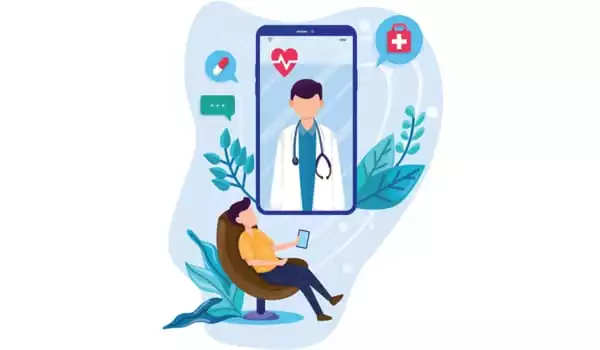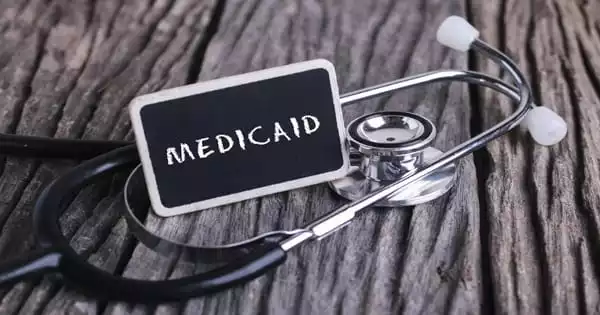A new study suggests that community health professionals employed by Medicaid health plans can help low-income persons who face barriers to care rely less on the emergency room and more on outpatient care. The CHWs in the study collaborated with Medicaid participants to develop a health plan and connect them with social and health care services in their community. According to the researchers, this might lead to better use of resources and, ultimately, lower costs for the Medicaid system in the long run.
The latest findings come from the most rigorous research of a real-world CHW program to date, a randomized controlled trial done in collaboration with local and state organizations and agencies by the University of Michigan Institute for Healthcare Policy and Innovation. The study was published in the American Journal of Public Health.
However, the study also demonstrates the difficulties in establishing a link between CHWs and high-use Medicaid users. The findings may aid Medicaid CHW programs in Michigan and elsewhere in improving how they support and manage efforts to bridge the gap between people and services.
“These results are really heartening, especially through the lens of success for Medicaid plans of decreasing acute care use and increasing use of ambulatory care among individuals who have not been accessing primary care,” said Michele Heisler, M.D., M.P.A., who led the project and is a professor of internal medicine at the University of Michigan Medical School. “Because of the possible cost savings, this is very positive for the long-term viability of CHW programs. However, our findings highlight the need of adaptability and tenacity when it comes to interacting with this patient population.”
These results are really heartening, especially through the lens of success for Medicaid plans of decreasing acute care use and increasing use of ambulatory care among individuals who have not been accessing primary care.
Michele Heisler
Heisler and her IHPI colleagues conducted the research with the assistance of three of Michigan’s Medicaid managed care insurance plans, which have been mandated to implement CHW programs since 2016.
They concentrated on Cody Rouge, a mostly Black and low-income Detroit neighborhood with a high number of Medicaid subscribers who did not visit primary care and instead went to emergency departments, as well as a robust network of the local community and social support organizations. They collaborated with the Detroit Health Department, the Joy-Southfield Community Development Corporation, and the Michigan Community Health Worker Alliance to create and carry out an evaluation of the CHW program that was already in place at the three health plans.
The study randomly allocated roughly 2,500 Medicaid participants who had sought emergency treatment three or more times in the previous year, or who had been hospitalized for an illness that might have been efficiently treated in an outpatient setting, to the study. The participants were 65% female, with an average age of roughly 30, and earn less than 133 percent of the poverty line. A little less than 1,400 people were assigned to the category that might be approached by a CHW.

However, due to difficulties in reaching and interacting with these individuals, only 284 of them were reached by CHW outreach. Approximately half of those individuals met with a CHW to assess their health and social needs, develop a plan, and receive referrals to local agencies.
The health plan CHWs experienced obstacles to effective outreach, such as participants’ outdated contact information, work hours that did not correspond to their availability, and enrollees’ concerns about why CHWs were attempting to contact them.
Despite this minimal participation, the study found substantial disparities. The group of 284 people who had some contact with a CHW had an average of 6.4 medical office visits per person-year and 2.8 emergency department visits per person-year by the end of the first year after randomization, compared to 5.3 and 3.1 for the control group and 4.8 and 3 for the group of 1,100 people who were randomized to the CHW arm but had no CHW contact.
Emergency care expenditures per person-year were approximately $500 lower in the active group of 284 than in the control group, whereas outpatient expenses were approximately $450 higher. The total costs were the same.
All of the CHWs in the study were Black and either from Cody Rouge or were familiar with the area. They were all given the same training in autonomy-supportive communication and other best CHW practices, and they utilized the same health and social needs assessment guides when they first met with participants. This is consistent with the CHW approach, which emphasizes employing and training employees who share traits with the people they serve, such as culture, ethnicity, language, and community.
Several other studies have found that CHW programs can enhance clinical outcomes while also lowering hospital readmission rates and expenditures. However, they have not been major randomized controlled studies designed to assess the performance of a real-world CHW model with fully funded personnel rather than grant-financed CHWs. Furthermore, few studies have looked at both ambulatory and acute care, such as emergency department visits and hospitalizations.
According to Heisler, as a result of the study’s findings, the Medicaid health plans involved have moved to contract with local community organizations for CHW employees, allowing them to be more in touch with the individual community or neighborhood. Plans have enabled CHWs to work in the evenings and on weekends, rather than only during regular work hours, when many enrollees are at work or school and unavailable. She believes that the CHW concept, which is part of the state of Michigan’s Medicaid program, should be replicated nationwide.





